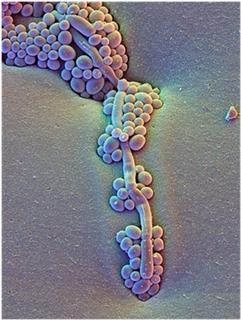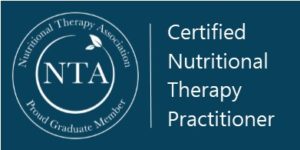This is guest post on Understanding and Healing from Yeast Over-Growth by Amy Jones.
 Amy Jones is a Childbirth Educator and Birth Doula. She teaches classes on vaccines, herbs, essential oils, and nutrition and has authored two books, A World of Wisdom Cookbook and The Way of the Peaceful Birther. All of this led to her co-founding and directing Holistic Living Events, which puts on the annual LDS Holistic Living Conference.
Amy Jones is a Childbirth Educator and Birth Doula. She teaches classes on vaccines, herbs, essential oils, and nutrition and has authored two books, A World of Wisdom Cookbook and The Way of the Peaceful Birther. All of this led to her co-founding and directing Holistic Living Events, which puts on the annual LDS Holistic Living Conference.
You Don’t Have a Yeast Problem?
Yes, you do. Seriously, stop arguing with me…you do. I don’t care if you’ve never had a vaginal yeast infection, you still have a yeast problem. How do I know? Read on…
What’s the Big Deal?
You think cancer is our nation’s biggest health problem? Think again.
What if I told you that the majority of all your health woes, if not all of them, were all rooted in one problem? Yeast overgrowth. Specifically speaking, Candida Albicans.
 What modern people have come to describe as normal, and even expected, in terms of their health is far from normal and almost all of it is rooted in yeast. Once, after I gave a lecture on yeast, a young woman approached me and asked something to the effect, ‘So, you’re saying that my irritable bowel is yeast? My headaches, probably yeast? My infertility, likely yeast? My gas, yeast? My eczema, yeast? My baby’s incessant crying, yeast?’ When I responded yes to all of it, there was a look of disbelief, relief and terror on her face. I understood. I remember having that moment once.
What modern people have come to describe as normal, and even expected, in terms of their health is far from normal and almost all of it is rooted in yeast. Once, after I gave a lecture on yeast, a young woman approached me and asked something to the effect, ‘So, you’re saying that my irritable bowel is yeast? My headaches, probably yeast? My infertility, likely yeast? My gas, yeast? My eczema, yeast? My baby’s incessant crying, yeast?’ When I responded yes to all of it, there was a look of disbelief, relief and terror on her face. I understood. I remember having that moment once.
But is yeast overgrowth just a modern day problem? No – there are many many, many historical reports – even in the Bible – that describe ailments that we now know are the result of yeast overgrowth. Some even believe that the week long Passover observance was God’s way of helping his people balance yeast overgrowth so that the ‘destroying angel would pass them by’.
While yeast overgrowth is nothing new, it is become an epidemic in the past century or so. So much so, that the majority of the people in the United States suffer daily from yeast overgrowth manifestation in one form another.
As a mother, doula and childbirth educator it has become even more apparent that we as a nation are in the midst of a yeast crisis as I see infants – some as young as a week old – exhibiting painful signs of yeast overgrowth. Colic, cradle cap, reflux, diaper rash – what we’ve all come to expect and define as normal is, in fact, yeast overgrowth. And it’s becoming so rampant that it is rare that I see an infant that doesn’t have symptoms.
If not balanced and managed throughout one’s life, these symptoms can morph into bigger, debilitating issues as you will see. In fact, I challenge you to look at the symptoms in the different stages of yeast overgrowth and not identify with at least one of two of the symptoms.
The good news is, balancing yeast is more simple and cost effective than most people have been led to believe.
Internal yeast, or Candida Albicans, is part of the ‘zoo’ in our bodies and we need a certain level of it in order to be healthy. Yeast is responsible for eating our bodies away when we die. But when we have an overgrowth in our bodies, it can literally eat us alive.
How is it Managed?
While the liver is responsible for the management of yeast, yeast can overgrow in every part of our body. The overgrowth (known as Candidiasis) usually starts in the digestive system and gradually spreads to other parts of the body. It is also a type of parasite that is strong, invasive and usually attaches itself to the intestinal wall and becomes a permanent resident of the internal organs.
Candidiasis has the ability to produce 75 toxic substances that can poison the human body.
Candidiasis is so invasive that it enters the gastrointestinal wall in the form of fungus where it develops very long, root like structures that penetrates the wall breaking down the protective barrier between the intestinal tract and the bloodstream. This breakdown allows the entrance of foreign as well as toxic substances to the bloodstream where they can harm various body systems.
I remember when my husband was balancing his yeast and had some major die off in the form of vomiting. He complained to me how unique this felt – not like a typical vomit, almost like someone was ripping his insides out. I replied that was because the yeast root structure was literally being torn out of his gut.
The breaking down of the barrier results in some major problems especially when proteins and other food wastes are not completely digested or removed. There can also be an attack on the immune system that causes severe allergic reactions, fatigue and other health problems.
Candidiasis together with some bacteria swimming in the bloodstream is dangerous since it will be able to find its way to other tissues.
Candida infection may also cause of some heart attacks. There are reported cases of people who have never been diagnosed with heart problems, but then die from a heart attack for no apparent reason. Further, investigation has lead to surprising findings of Candida yeast causing undiagnosed heart attacks. Candida yeast can cover the heart, which is what causes the heart attack. The Candida yeast reaches the heart by means of the bloodstream.
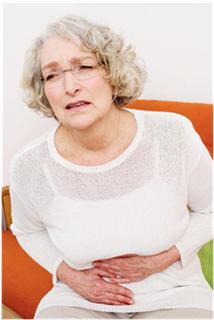 Candidiasis or Candida infection usually interferes with digestion and assimilation of vitamins and minerals. A great number of senior citizens, cancer patients as well as those individuals with HIV are suffering nutritional deficiencies because their body is unable to absorb nutrients from the food that they eat. A great number of people are experiencing iron deficiency due to the presence of Candida.
Candidiasis or Candida infection usually interferes with digestion and assimilation of vitamins and minerals. A great number of senior citizens, cancer patients as well as those individuals with HIV are suffering nutritional deficiencies because their body is unable to absorb nutrients from the food that they eat. A great number of people are experiencing iron deficiency due to the presence of Candida.
Immunological weaknesses and infectious conditions are usually worsened by the presence of Candida parasites throughout the body. Yeast cell activity gives off two dangerous by-products: acetaidehyde and ethanol.
The Candida parasites also prohibits oxygen from entering the tissues. The ethanol that is given off by Candida parasites is the major cause excessive fatigue and reduction of strength and stamina in people infected with Candida. The ethanol likewise destroys enzymes that are needed for providing cells with energy and releases free radicals that hasten the aging process.
Most women have commented to me that just because they don’t have a vaginal yeast infection, they must not have a yeast problem. Most everyone believes that men can’t have a yeast problem. And that the only symptom in a baby is thrush. Wrong! Dangerously wrong, in fact.
Even a lot of health nuts that should ‘know better’ have said to me, ‘Oh, there’s no way I have a yeast problem, I eat too well!’ as they scratch their eczema. Uh-huh.
Yeast overgrowth manifests itself in so many different ways that it can be hard to keep up, but getting to the root of your symptoms is such a relief. When I realized that all my baby’s problems were yeast related, and so many of my problems were also yeast that I got in the womb from my mother, it made solving all these symptoms so easy – all I needed to do was balance yeast.
Stages of Yeast Overgrowth
Stage 1
In the First Stage of Candida, the mucous membrane areas of the body may be infected. These include the mouth, vagina, nose, and Respiratory System.
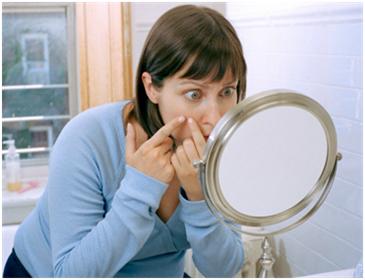 Symptoms of First Stage Candida
Symptoms of First Stage Candida
- Infant Colic, childhood rages, adult unexplained unprovoked anger
- Cradle Cap, dandruff, greasy hair
- Vaginal yeast infections and itching
- Severe P.M.S.
- Urinary tract infections
- Body rashes (including diaper rash)
- Diffuculty falling or staying asleep
- Eczema
- Acne
- Oral thrush
- Allergies to foods, dust, molds, fungus, yeast, inhalants, and chemicals
- Repeated bouts of bronchitis, sinusitis, tonsillitis, and strep or staph infections
- RSV
- Mononucleosis
- Pneumonia
- Gas (infant or adult)
- Unexplained tooth decay
- Bad breath and body odor
- Mastitis – sore, creacked, and bleeding nipples during breastfeeding
- Bladder weakness
- Spotty skin discoloration (white or brown) also known as liver or sun spots
- Cravings for alcohol
- Cravings for sugar
- Rectal itching
- Persistent cough
- Belching
- Heartburn
Stage 2
The Second Stage of Candida may involve more generalized and chronic reactions.
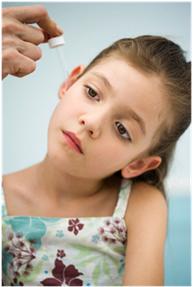 Symptoms of Second Stage Candida:
Symptoms of Second Stage Candida:
- Unexplained weight gain or inability to keep weight on
- Ear infections, unexplained ear discharge, tinitis (ringing of the ears)
- Chronic pain
- Headaches (including Migraine)
- Extreme fatigue
- Psoriasis
- Nail infections
- Muscle aches
- Joint pain
- Arthritis
- Fibromyalgia
- Ulcers
- Infant or adult reflux
- Casein or gluten intolerance / celiac
- Ulcers
- Endometriosis
- Jock itch
- Dizziness/vertigo
- Bladder infections/UTI
Stage 3
The Third Stage of Candida may involve MENTAL and BEHAVIORAL RESPONSES:
 Symptoms of Third Stage Candida:
Symptoms of Third Stage Candida:
- Inability to concentrate
- Not being able to read or follow a television program or carry on a hobby
- Serious forgetfulness
- Memory loss
- Mental confusion
- Not being able to think of the words to say something
- Switching around of words and letters when trying to speak and/or write
- Loss of previous skills (such as how to type or how to play the piano, etc.
- Irrational thoughts
- Unusual fears
- Phobias
- Panic / anxiety attacks
- Muscle twitching
- Irritability
- Violence
- Depression
- Aggressive behavior
- Epileptic seizures
- Thoughts of death or suicide
- Infertility
- Crohn’s disease
- IBS
- Leaky Gut Syndrome
- Diabetes
- Hypoglycemia
- Thyroid disorders
Stage 4
A person in the Fourth Stage of Candida (also known as systemic yeast) may experience a virtual SHUTDOWN OF VARIOUS ORGAN SYSTEMS of the body.
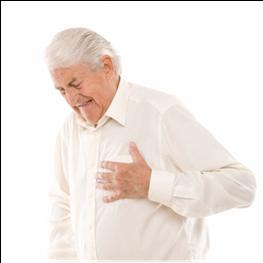 Symptoms of Fourth Stage Candida:
Symptoms of Fourth Stage Candida:
- Adrenal gland failure
- Endocrine System failure
- Severe vomiting
- Severe constipation
- Total muscle weakness
- Hives
- Boils
- The Circulatory System may be swamped with so much yeast that the capillaries are clogged, causing HIGH BLOOD PRESSURE, NUMBNESS OF EXTREMITIES, and EASY BRUISING.
- The person may run a low-grade fever, but the hands and feet will often be very cold
- Tachycardia (palpitations, irregular beats, mitral valve problems or heart murmur)
- In the Respiratory System, the alveoli (air sacs) of the lungs may be packed with yeast so that person cannot get adequate breath AKA asthma
- Alzheimer’s
- ADD / ADHD
- Autism
- AIDS
- Lupus
- Multiple Sclerosis
- Osteoporosis
- Schleroderma
- The complete failure of the Immune System leaves the body defenseless against all enemy bacteria, viruses, and disease conditions – including cancer.
What Causes Yeast to Overgrow?
When you look at the list of things that can cause yeast to overgrow, it easily explains why it has become an epidemic in the past century, and certainly within the past few decades. You also begin to understand why yeast overgrowth has always been a concern. It is nearly impossible for modern people to escape exposure to these triggers, which is why it is incumbent to everyone to always be vigilant about their diet and lifestyle and how it may affect their internal zoo and treat accordingly. Take a deep breath, here is a list of the most common and likely yeast overgrowth triggers:
- Antibiotics

- Refined flours/high starch/carbohydrate foods
- Alcohol, recreational drugs, many prescribed drugs
- Use of corticosteroid and non-steroidal anti-inflammatory drugs (NSAIDs)
- Stress (depresses or even shuts down the Immune System)
- Infant formula use
- Vaccines
- Cesarean Sections (yeast overgrows for both the mother and the baby)
- Any type of surgery or traumatic injury
- Exposure to heave metals (via tooth fillings, vaccines, food,and tap water)
- Exposure to artificial coloring, flavorings, and sweeteners
- Insufficient vitamin D (in particular, not enough direct sunlight exposure)
- Consuming animal products contaminated with antibiotics or growth hormones, i.e. any meat or dairy that is NOT organic
- Insufficient sleep
- Excessive traveling, especially to other countries
- Pesticide / herbicide consumption
Even if you’ve had antibiotics only once, as a baby even or had only one vaccine in your whole life, or have since gotten your fillings replaced with composites, I guarantee you have a yeast overgrowth going on.
How to balance yeast
 I often describe balancing yeast like getting rid of a stalker ex-boyfriend. you can’t just politely ask it to keep its distance by eliminating your refined sugar and flour intake. You have to submit a restraining order and get your concealed weapons permit and learn to shoot by not only adjusting your diet, but changing your lifestyle and taking herbs, essential oils, etc.
I often describe balancing yeast like getting rid of a stalker ex-boyfriend. you can’t just politely ask it to keep its distance by eliminating your refined sugar and flour intake. You have to submit a restraining order and get your concealed weapons permit and learn to shoot by not only adjusting your diet, but changing your lifestyle and taking herbs, essential oils, etc.
When I went looking for ways on how to balance yeast (initially I thought this was just for my babies and young children), all of them seemed – well – unattainable. The diet suggestions alone would mean that my kids would likely starve themselves. It seemed so daunting and overwhelming that I almost had resigned myself that it would be easier to live with a yeast overgrowth than treat it via the suggestions I was finding.
So, I had to find something kid friendly. That didn’t happen. I basically had to create it myself. So then, I have talked with other people who have approached yeast balancing in a much more practical manner. Here are some of those more simple ways to get yeast in check:
Step 1: Probiotics
 A note about good bacteria: As newborns, our large intestines are colonized by beneficial bacterial, like Lactobacillus acidophilus and Bifidobacterial bifidum. These bacteria, acquired from our mothers as we pass through the birth canal (one reason why c section babies are more sickly), perform a number of functions in our bodies. They manufacture B vitamins, aid in the digestion and absorption of food, and provide a barrier on the mucosal lining of these various tissues, preventing abnormal bacteria and yeast from entering the system. Besides coexisting peacefully in the colon, beneficial bacteria also reside in the mucous membranes of the throat and in the vagina. These “good bacteria” live within us in a symbiotic, friendly relationship.
A note about good bacteria: As newborns, our large intestines are colonized by beneficial bacterial, like Lactobacillus acidophilus and Bifidobacterial bifidum. These bacteria, acquired from our mothers as we pass through the birth canal (one reason why c section babies are more sickly), perform a number of functions in our bodies. They manufacture B vitamins, aid in the digestion and absorption of food, and provide a barrier on the mucosal lining of these various tissues, preventing abnormal bacteria and yeast from entering the system. Besides coexisting peacefully in the colon, beneficial bacteria also reside in the mucous membranes of the throat and in the vagina. These “good bacteria” live within us in a symbiotic, friendly relationship.
Remember the Rule of 15
Take a live, strong probiotic daily, consisting of at least 15 billion active cultures. The more the merrier. Also, look for a probiotic containing at least 15 different strains of beneficial bacteria. Typically, the best ones will be in the refrigerated section of your health food store and the most expensive – sorry. No, a good daily yogurt is not enough to colonize your gut with what is needs. Probiotics contain our good bacteria, that coat our internal organs and keep yeast in check, preventing it from invading our systems through our organ walls. For infants, you want to get a probiotic that specifies that it’s for babies and toddlers, as the molecules are smaller and are more available in their little systems. If you are unable to find infant or toddler specific probiotics, go ahead and use the adult ones.
- Prebiotics. Prebiotics are non-digestible parts of foods that probiotics can use to fuel their growth and activity. the prebiotics work by stimulating the growth of probiotics. However, in order to get to where they are needed, prebiotics must be able to get through the upper part of the intestine without being digested or absorbed by the body. The top prebiotics are:
- Chicory Root

- Jerusalem Artichoke
- Dandelion Greens
- Garlic
- Leek
- Onion
- Cooked Onion
- Asparagus
- Wheat bran
- Whole Grains, including oatmeal
- Banana
- Flax and chia seeds
- Almonds. Well known for their prebiotic properties that improve our digestive health by increasing levels of beneficial gut bacteria, in addition to being an excellent source of alkaline protein. Soaking them in water in the refrigerator for at least 4 hours will remove their phytic acid (an enzyme inhibitor that protects the nuts while growing), making the nutrients more bio available. You may wish to sprinkle unrefined salt or Redmond salt on them.
Step 2: Greens
Taking a greens supplement is incredibly helpful when you are balancing yeast. mold, Fungi, and yeast attach on to the greens molecules which helps to sweep them out efficiently.
Step 3: Treatment
You can approach balancing yeast with herbs, essential oils, or homeopathics. The latter I will not address because I haven’t personally tried it, although I’ve known many people who have used homeopathics successfully to balance yeast.
 Herbs: equal parts chaparral, pau d’arco, olive leaf, and myrrh.
Herbs: equal parts chaparral, pau d’arco, olive leaf, and myrrh.
These can be encapsulated or tinctured, or purchased commercially at Feel Good Foods.
If you are in stage 1, you could try the following regimen for persons 7 years and older: 3 pills (or 3 dropperfuls – dropperful equals 25 drops), 3 times per day for 14 days – which would equal 120 pills or 4 oz of tincture. For stage 2, you could use 3 pills two times a day for 21 days; for stage 3, 3 pills once a day for 28 days; and for stage 4, 1 pill once a day for 60 days. These are conservative dosages in order to avoid die off debilitation which I’ll discuss later.
Tips and tricks for treating with herbs:
- Once this initial treatment is complete, take 3 pills (or 3 dropperfuls) once a day for one month for every year you’ve had a problem, otherwise the yeast is likely to overgrow again quickly. For many people, this would include exposure to yeast overgrowth in the womb. For instance, if you are 30 years old, and you feel you’ve had yeast overgrowth symptoms all your life, you would take 3 pills a day for 30 months. Add on one more month if you think your mother had yeast overgrowth when she was pregnant with you.
- Be sure to take a probiotic, greens, and prebiotics with this regimen.
- For infants and between 4-12 months, doing 1 dropperful per day with probiotic is sufficient.
- For children 1-3 years, 2 dropperfuls with a probiotic per day.
- For children 4-6 years, 2-3 dropperfuls with a probiotic
- My Feel Good Foods Regimen. some people report great success on this regimen.
 Essential oils: (recommendations courtesy of Julia Holt) 5 drops Lemon Essential Oil, 5 drops Melaleuca (Tea Tree) Essential Oil, 3 drops Oregano Essential Oil, in a capsule – take 1 per day with a meal.
Essential oils: (recommendations courtesy of Julia Holt) 5 drops Lemon Essential Oil, 5 drops Melaleuca (Tea Tree) Essential Oil, 3 drops Oregano Essential Oil, in a capsule – take 1 per day with a meal.
Tips and tricks for treating with essential oils:
Rotate using the essential oils with probiotics. for example, stay on the yeast killing blend for 10 days. Then rebuild with a probiotic for 5 days, taking a good probiotic 3x day. Repeat cycle until yeast is controlled.
This cycle can last a few months.
Diet and Other Supplements
 Personally, I am not of the school of thought that eliminating fruits and vegetables from the diet is healthy or beneficial when balancing yeast. While it is true that yeast can feed off of these foods, I find that treating with the herbs or oils eliminates the ‘need’ to cut out any healthy foods. Additionally, many people are so intimidated by the diet restrictions, that they feel living with the yeast is better than the treatment. I have found that those with a while food diet, ones that even include clean dairy and meat, can see huge success implementing the herbs and oils, but the following are some general diet guidelines that will improve your outcomes:
Personally, I am not of the school of thought that eliminating fruits and vegetables from the diet is healthy or beneficial when balancing yeast. While it is true that yeast can feed off of these foods, I find that treating with the herbs or oils eliminates the ‘need’ to cut out any healthy foods. Additionally, many people are so intimidated by the diet restrictions, that they feel living with the yeast is better than the treatment. I have found that those with a while food diet, ones that even include clean dairy and meat, can see huge success implementing the herbs and oils, but the following are some general diet guidelines that will improve your outcomes:
- Coconut water and Cold pressed Coconut Oil. It contains caprylic acid, a powerful anti-fungal agent that directly kills the Candida yeast. At minimum, drink the water from one or more coconut daily and/or take 3 tbsp. of oil per day.
- Garlic. Two fresh cloves is high in a biologically active compound called allicin. This is a strong anti-fungal.
- Diet. Reducing and/or eliminating refined sugars, refined flours, and refined grains (i.e. white rice) is the most important step.
- Vitamin D. yeast overgrowth produces an immune suppression, or maybe it overgrows because of a lack of it, but either way, when a yeast overgrowth is present, you must increase your vitamin D levels. Sources of vitamin D include those found here.
Yeast Die Off: The Herxheimer Reaction
 Ah! Die off. I hate it, but I love it.
Ah! Die off. I hate it, but I love it.
When large numbers of yeast cells die in a short period of time, the body has a difficult time detoxifying them quickly. As a result, yeast toxins enter circulation and can cause symptoms in the mucous membranes that cover the surfaces of most organs in the body, including the mouth, esophagus, stomach, intestine, sexual and urinary organs, sinuses, ears, and bronchi.
Those who are in stage 2 or higher of yeast overgrowth tend to feel worse, not better, when they begin balancing yeast because of die off.
Because most babies and toddlers are still only in stage 1, they tend not to experience negative symptoms of yeast die off.
Though this can be a disturbing experience, it is actually a sign that the treatment is working. These symptoms are the predictable result of yeast die-off, also called the Herxheimer reaction.
Each person’s die-off reaction is different.
In some, preexisting symptoms are exacerbated; in others, new symptoms appear. Symptoms can last anywhere from several days to two weeks, usually starting on the third day of balancing yeast. Typical die off symptoms are vomiting, diarrhea, greasy hair, stomach upset, gas, burping, and vertigo, fatigue, brain fog, low grade fever, headache, sore throat, body itch, muscle and/or joint soreness or pain, feeling as if coming down with a flu.
 To reduce or eliminate die off symptoms:
To reduce or eliminate die off symptoms:
- Take a strong, daily probiotic
- Strong, daily greens supplement
- A daily coffee enema gets rid of the yeast as quickly as it is dumping.
- More water should be consumed. 4-6 fluid ounces of warm or hot water every forty-five minutes, throughout the day
- Rest
- Peppermint essential oil internally
- Chlorophyll drops as needed
- 1/2 cup of cooked brown rice daily
- Dry skin brushing before and after a shower stimulates your liver and helps your elimination pathways open.
- Take measures to have more bowel movement. Senna, Smooth Move Tea, or On The Move from Herbalogie.com
- Grind a small amount of flax seeds in a coffee grinder until fine, light and fluffy, then stir a heaping tablespoon into a glass of lukewarm water, let stand for about ten minutes, stir again and drink on an empty stomach
- Troy an Epsom salt bath, or a baking soda bath, to help draw out toxins.
If you do not effectively rid the yeast as it is dying off and dumping, it can possibly settle in other areas of your body, such as your joints and cause arthritis type symptoms. yeast die off symptoms are a sign that the system’s eliminatory pathways are overburdened or as oftentimes happens, blocked.
Individuals with elevated heavy metal levels may have special problems with yeast die-off reactions.
If you experience yeast die off symptoms and refuse to do an enema, I would recommend backing off of your herbal or essential oil dosage. This would mean that your road to yeast balancing will take longer and may be more difficult than had you done enemas.
Maintenance
 Since we are constantly exposed to yeast overgrowth triggers, such as heavy metals and stress to say the least, after you balance out initially, it is highly unlikely that you will never need to re-balance your gut.
Since we are constantly exposed to yeast overgrowth triggers, such as heavy metals and stress to say the least, after you balance out initially, it is highly unlikely that you will never need to re-balance your gut.
Taking a probiotics and greens supplement daily, in addition to improving your diet is just the first step to keeping your gut in check.
Just for good measure, you may want to spend at least one month out of the year taking the yeast herbs daily. January is a great time to do this, as it is right after the holidays when we are barraged with sub-par foods and stress. Treating for yeast after a particularly stressful event would also be a good idea.
For instance, I do a yeast cleanse in January and stay on yeast balancing herbs for a month or two after that. Since I have learned more about the Passover, I will also be incorporating more of a traditional Passover observance in Spring by at least fasting until dinner on Passover week, and eating very anti-Candida foods.
Also, meditating, exercising, laughing, and engaging in other stress reducing activities as part of a permanent lifestyle change are in order. Additionally, consider going off as many, if not all, pharmaceuticals, including birth control pills. Learning how to use ‘natural antibiotics’ so that you can reduce or eliminate treating with prescription antibiotics would be a high priority as well.

